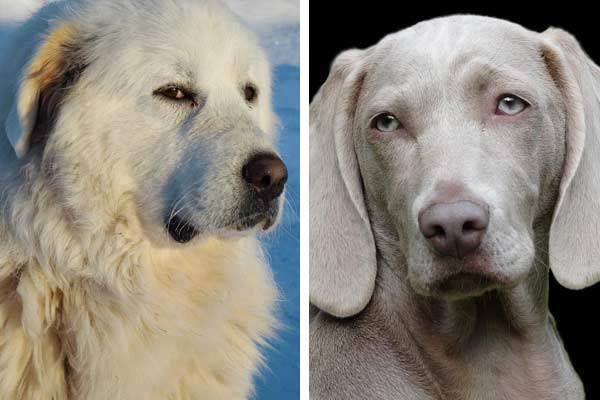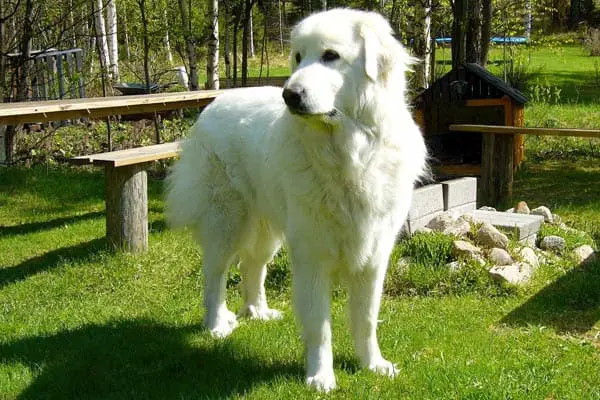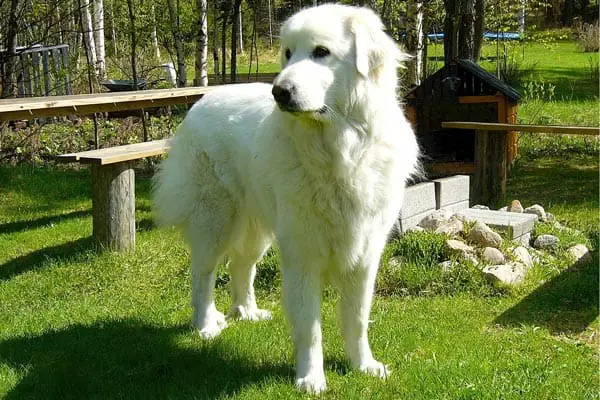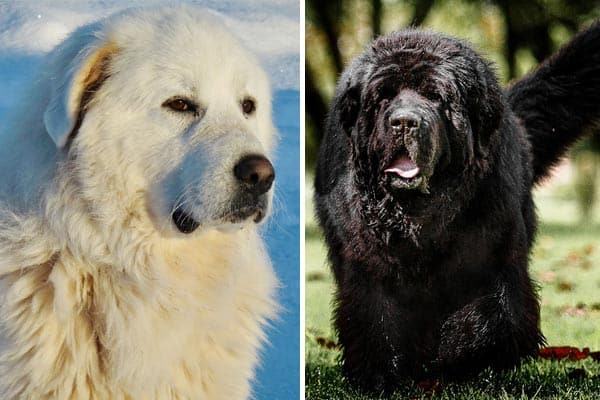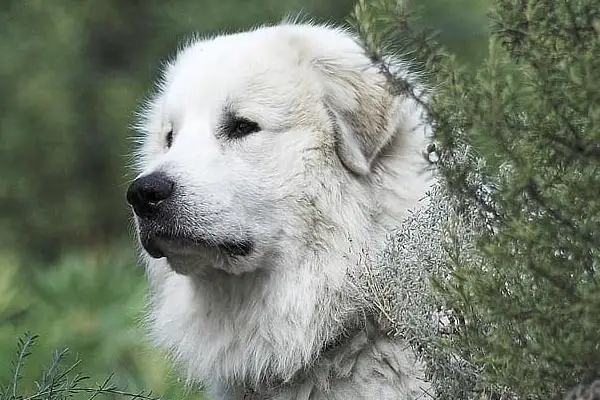Do Great Pyrenees Have Webbed Feet?
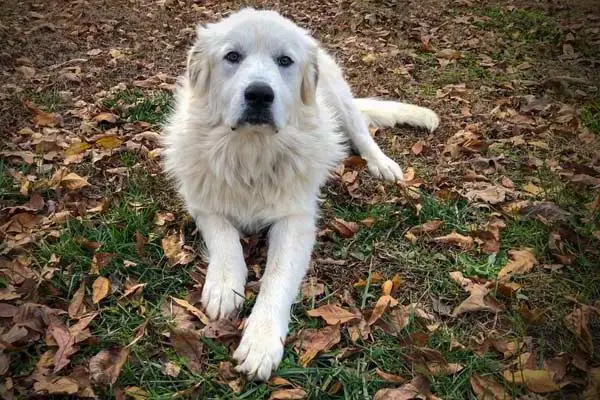
The term “webbed feet” refers to a skin membrane that forms between the toes in dogs. It’s reminiscent of the foot of aquatic creatures.
The vast majority of people have the misconception that dogs of certain kinds are the only ones with webbed feet; however, the reality is that most types of dogs have webbed feet.
Most land mammals lose their webbed feet as they mature, yet webbed feet are present in the embryos of all terrestrial mammals. The Great Pyrenees are not an exception in this regard.
The answer is yes if you ask whether Great Pyrenees possess webbed feet. Webbed feet are a characteristic of this breed. On the other hand, the webbing is not nearly as prominent as it is in certain other breeds.
Also, the Pyrenees do not possess this quality as a distinctive characteristic. Dogs with webbed feet were initially developed to aid fishermen and hunters by wading across deep water.
On the other hand, the Great Pyrenees are a breed native to the mountains designed to guard cattle in mountainous regions. However, the limited webbing in their feet allows them to gain more excellent stability on the rugged mountain terrain and to walk more readily across the snow.
Benefits of Webbed Feet in Dogs
The webbed feet in dogs are not the result of some bizarre genetic aberration; instead, they frequently serve an essential purpose.
They assist dogs in accomplishing the jobs for which they were bred. I’ll start with the most obvious advantages of having webbed paws and work my way down the list.
Easier Movement across Different Terrains
The great Pyrenees are well-known as excellent walkers and climbers, and as they explore, they encounter a wide variety of surfaces.
Considering the scree-like surfaces of the mountains where the Great Pyrenees are commonly seen is essential.
Most of the time, they have to traverse terrain that is both hazardous and difficult to traverse. The Great Pyrenees cannot afford that unless they have webbed feet.
When the webbed toes of a Great Pyrenees dog encounter rocky or highly rough terrain, they adapt on their own. As a result, their feet are superbly adapted to their needs. Their paw pads swell for better traction in wet or slick conditions. Then it helps you keep your balance by giving you a firm hold.
The great Pyrenees have a thicker membrane in between their toes than aquatic dog breeds. Although the capability to traverse challenging terrain is never compromised.
As the Great Pyrenees are home to some massive rock formations, this is something to be revered. However, the Great Pyrenees is primarily kept as a house pet.
You are familiar with the appearance of webbed feet. The reason is: that they resemble lovable polar bears. If you have one, you can examine the interior of its paws by spreading its toes.
The Webbed Feet of the Great Pyrenees Are Extremely Useful during the Winter
The Pyrenean mountain range is where these dogs first appeared and were utilized to protect the local livestock. Consequently, these canines are ideally suited to the chill of a Canadian winter.
Webbed paws are like snow boots for animals. Like how their paw pads expand as they walk through snow, this also happens when they tread on ice. With this, they won’t sink too far when walking through the snow. This natural boon makes quick work of their tasks.
Nonetheless, I know that many people maintain the Great Pyrenees in their homes. Despite their inherent tolerance for cold, domestic dogs have a hard time adjusting to snow.
Helpful for Swimming
Webbing is a characteristic seen on the feet of all creatures that spend significant amounts of time in the water, such as ducks and frogs. This is probably something that you already know.
In the world of dogs, things are not too different from how they are here. Most water dog breeds, such as Labrador Retrievers, Newfoundlands, and Otterhounds, have distinctly webbed paws, contributing to their exceptional swimming abilities.
These dogs have membranes nearly like paddles between their toes, enabling them to propel themselves ahead with each leg stroke while they swim. They will allow them to swim more quickly, expend less energy, and have greater control over their movement while in the water.
On the other hand, dogs like Great Pyrenees have problems swimming since their feet don’t have as much webbing and surface area between the toes.
Although it is possible to get these dogs into the water, it is likely that they will have a more difficult time and will use a great deal more energy than native water breeds.
Better at Digging
You probably already know this if you’ve ever had a dog because canines are naturally inclined to dig holes. Dogs like this activity, but it is not something we would consider a desirable trait in them.
Nevertheless, it is advantageous for some hunting breeds because they frequently have to dig the prey independently. And the fact that they have webbed feet incredibly assists them when digging.
In a manner analogous to swimming, in which they use their feet as paddles, these individuals use the webbing to fashion something resembling a scoop, enabling them to move around and dig holes more easily.
What If Your Great Pyrenees Does Not Have Webbed Feet?
If they do not have webbing in their feet, it will be tough for them compared to other dogs, and their toes will be spread apart in a manner comparable to how our fingers seem. Compared to the other Great Pyrenees, he won’t be able to participate in the same kinds of activities.
If you want to keep the Great Pyrenees as a house pet, you shouldn’t stress too much over it. However, you shouldn’t worry much since they are already living a healthy and happy life. They won’t reap a significant number of benefits from it.
However, if you want to buy the Great Pyrenees to protect cattle, and the dog doesn’t have webbed toes, then the dog isn’t suited for most situations.
If you are still concerned about it, you should seek the advice of a qualified veterinarian in the vicinity to determine whether or not everything is in good shape.
The primary issue is that many people tend to breed them how they would like them to be. This means that this particular breed of dog could change over time. It is, therefore, essential to be able to recognize a Great Pyrenees that is of the pure breed.
Various Types of Dog Paws
The distinct categories of dog paws are:
- Cat’s Feet
- Hare Feet
- Webbed Feet
The Bottom Line
If your Pyrenees is mainly used as a family pet and spends most of its time inside the house, you shouldn’t be too worried about whether or not the Great Pyrenees have webbed feet.
On the other hand, if you intend to take your pet swimming or have it run around frequently on snowy or squishy surfaces, then you should learn more about webbed feet.
Pyrs belong to a group of canines with webbing on their feet of average size, making them ideally suited for the work for which they were bred.
It’s possible that the webbing on their paws prevents them from being the best swimmers, but it comes in handy when they need to move across snow or uneven terrain.
Even if the webbing on their legs is not particularly obvious, you should pay attention to it and inspect it often as part of your routine for providing care for them.
